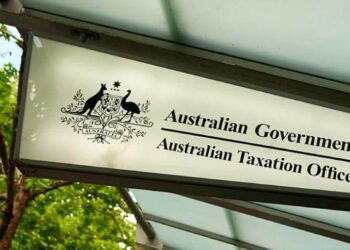Earlier this year, as part of the government’s changes to ECPI, the government proposed to provide greater choice for superannuation fund trustees to use their preferred method of calculating ECPI where the fund is fully in the retirement phase for part of the income year but not for the entire income year.
In a recent submission to the Treasury, the SMSF Association said that while it welcomed the positive policy intent behind this measure, there are concerns around how the measure may have the opposite effect and may lead to additional complexity and cost for SMSF trustees.
“We believe the time for this measure was when the Fair and Sustainable Superannuation legislation was first introduced,” deputy CEO Peter Burgess said.
“These reforms were significant, requiring substantial changes to SMSF accounting and administration software programs. This includes the calculation of and accounting for exempt current pension income.
“As we are now several years into the active use of the Fair and Sustainable Superannuation legislative reforms, industry, too, has moved forward.
“As such, accounting, administration and actuarial systems and processes are now well established to comply with the legislation. Allowing trustees now to choose their preferred calculation method will require further changes to software and accounting and administration processes.”
Mr Burgess believes the changes will create further complexity and cost, as software systems and administration processes will need to be able to support both calculation methods, including tax optimisation tools, to enable trustees and practitioners to identify the most tax-efficient calculation method given the specific circumstances of the fund.
SMSFA identified that issues would emerge for trustees such as having no specific time stated on when an election must be made by trustees, along with the need to meet their “best financial interests” duties and the additional costs of doing so.
“The measures are also set at the asset level. This is too generous and may be open to manipulation and cherry-picking,” Mr Burgess said.
“Furthermore, it allows for an asset to be segregated at any time during the year, suggesting multiple periods can be created throughout the financial year.”
Impacts on election timing and ECPI methods
As the draft legislation does not specify the time at which an election must be made, Mr Burgess said the legislation needs to be precise in this regard and recommended that a statement to the effect of where the trustees can elect the method they wish to apply up to the time the SMSF annual return (SAR) is lodged with the commissioner.
This would also provide trustees with clarity and certainty on when the choice of ECPI methods must be made.
The timing of the election is also relevant and important when considering a trustee’s best financial interest duty. Trustees need the opportunity to review and reflect upon the option best suited to the fund and its members to meet this obligation, according to Mr Burgess.
If elections are required to be made prospectively at the start of the financial year, this would mean the trustees of the fund would not have the benefit of having access to key information in making that decision.
“The fund’s activities and transactions for the income year would not yet be known and, as such, trustees would not be able to discharge their duties and obligations adequately and appropriately,” Mr Burgess said.
“Further, concerns are held as to what extent an SMSF trustee would be expected to explore different options and outcomes in discharging their duties.
“This will create additional administrative and cost burdens on SMSF trustees. We note revenue forecasts in the 2019 federal budget project no revenue leakage from this measure over the forward estimates regardless of which ECPI calculation method is applied.
“This suggests allowing SMSF trustees to choose their ECPI calculation method respectively (i.e. after the end of the income year), rather than prospectively (i.e. just before the income year commences), is unlikely to lead to any material revenue leakage.”
However, Mr Burgess noted that the law as proposed is very generous, applying at the asset level and allowing for an asset to be segregated at any time.
“The concern is that while this is well intended, the proposed legislation would result in aggressive tax planning that seeks to deliver more favourable tax outcomes for the fund,” Mr Burgess said.
“In our view, a simpler approach would be to adopt replacement legislation that would allow trustees to apply the proportionate method to all assets of the fund for the entire year of income.”
Under the new measures, the trustees would be required to obtain an actuarial certificate to determine the taxable/tax-free percentage to be applied to the fund income for that financial year. This means funds that are in the retirement phase for the entire year of income would be classed as segregated funds.
In this circumstance, an actuarial certificate would not be required and the whole of the fund’s income would be classed as exempt current pension income, according to Mr Burgess.
“To alleviate any red tape, additional cost and complexity, the proportionate method would be applied as the sole method. As such, replacing the current segregated current pension assets provisions and the proposed amendments in this bill,” he said.
“The proportionate method is one that aligns with the SMSF industry’s interpretation and application of the ECPI method that was broadly applied prior to 1 July 2017. It would also avoid the complexities associated with making elections on which method to apply, including decisions that would be required at the asset level over multiple periods under the proposed legislation.”
In the SMSFA’s view, by adopting the proportionate method, the measure would also align with the 2019 federal budget forward estimates and meet the policy objective of removing red tape along with unnecessary administration and cost from the system.
“In the event our recommendation was to be adopted, it may be prudent to consider delaying the commencement date of the new legislation,” Mr Burgess noted.
“The draft bill as presented is set to apply from the 2021–22 year of income onwards. To allow time for the passage of the bill and then for industry and software companies to amend their systems and processes, a revised commencement year of 2022–23 may be more appropriate.”



Why should pensions be tax-free? Its just helps the rich to get richer. Scrap tax-free pensions and no need for any of the mess.
Government pensions are tax-free, so why should SMSF pensions be any different?
They are funded from a pool of savings that has already been subject to tax while in accumulation phase, and/or from after-tax contributions. Why should they be taxed again?
Might be a mute point but in accumulation the rate of tax is only15%. Also government pensions are not tax free they are part of taxable income. I personally would like to keep the superannuation pension tax free but the superfund should continue to pay 15% tax on its income regardless of what phase members are in.
Part of taxable income, but with a SATO rebate which fully offsets the tax payable.
Government pensions should not be tax-free.
The income is taxed in accumulation mode at only 15%, not at the member’s marginal tax rate. For a lot of people this is a massive tax savings. Its only the income I’m suggesting to be taxed. This is not taxing amounts twice….
The 15% tax rate was enacted to provide an incentive for people to put money into super. Otherwise, why would anyone lock money away for 50 years for no tangible benefit.
I agree, 15% tax rate is a good incentive to get money into super. I’m not saying to increase the 15% tax rate on accumulation balances, just apply the tax rate to pension mode balances….
We also have the concept of elected segregation.
So this would now mean:
– Option for elected segregation; plus
– Option for deemed segregation if you’re 100% in pension phase – for any date ranges you like (e.g. around a CGT event); but
– All overridden if the fund has disregarded small fund assets (i.e. members with high balances)
Sounds like a silly mess?
We used to just have:
– elected segregation; or
– proportionate method.